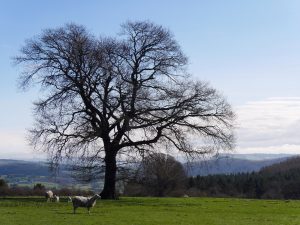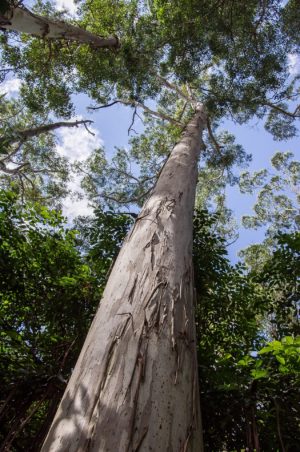Changing times?

The Earth has experienced many glacial and interglacial periods over hundreds of thousands of years. Since the last ice age, the Earth has warmed (the average global temperature has rising by some 4 to 5oC) but the temperature rise was about 0.1oC per century. Today's warmer climate took 5,000–8,000 years to ‘evolve’, during which time the average global temperature rose at a rate of around 0.1oC every century. This gradual change allowed trees to adapt to the changing climate. In the last century, ‘we’ have driven a 1.3oC rise just in the last century - this is some ten times faster than the change post ice age.

drought
Not only has the climate warmed, it has become increasingly unpredictable with heat waves, drought and torrential rain. These can have dramatic effects on our trees and heathlands. For example, the heatwave in 2022 resulted in Kew Gardens losing some 460 of its trees. This last summer saw 4 periods of heatwave conditions.
So, it is not surprising that some of our most familiar trees are struggling with these changed conditions. They are stressed, and it would seem that the climate is not likely to moderate in the immediate future. In recognition of the changing climate, Forestry England has produced a 'species for the future' list. The trees in the list are those which might thrive in a warmer climate.
Whilst it includes familiar species like oak, birch, and alder, other species such as the coast redwood and Corsican pine are included, which hopefully will create more resilient woodlands. The trees are listed below
- Aspen (Populus tremula)
- Beech (Fagus sylvatica)
- Coast redwood (Sequoia sempervirens)
- Common alder (Alnus glutinosa)
- Corsican pine (Pinus nigra subsp. laricio)
- Douglas fir (Pseudotsuga menziesii)
- Downy birch (Betula pubescens)
- European silver fir (Abies alba)
- Field maple (Acer campestre)
- Grand fir (Abies grandis)
- Grey alder (Alnus incana)
- Hornbeam (Carpinus betulus)
- Japanese red cedar (Cryptomeria japonica)
- Lodgepole pine (Pinus contorta var. latifolia)
- Macedonian pine (Pinus peuce)
- Maritime pine (Pinus pinaster)
- Norway spruce (Picea abies)
- Pedunculate oak (Quercus robur)
- Red oak (Quercus rubra)
- Rowan (Sorbus aucuparia)
- Scots pine (Pinus sylvestris)
- Sessile oak (Quercus petraea)
- Silver birch (Betula pendula)
- Sitka spruce (Picea sitchensis)
- Sweet chestnut (Castanea sativa)
- Sycamore (Acer pseudoplatanus)
- Western hemlock (Tsuga heterophylla)
- Western red cedar (Thuja plicata)
- Wild cherry (Prunus avium)
- Wild service tree (Sorbus torminalis)
 The list contains both native and non-native species, the aim is to create through planting stronger and more biodiverse woodlands that can tolerate our changing climate over the coming decades. The rate of climate change is the main issue. Whilst some of the trees already grow here, others come come from warmer / drier areas, such as the Mediterranean or North America.
The list contains both native and non-native species, the aim is to create through planting stronger and more biodiverse woodlands that can tolerate our changing climate over the coming decades. The rate of climate change is the main issue. Whilst some of the trees already grow here, others come come from warmer / drier areas, such as the Mediterranean or North America.
There are already many redwoods in the UK. They were introduced in victorian times, when they were planted on the estates of the wealthy and landed gentry. There are now probably more redwoods in the UK than in their native Pacific Coast range, there intense heat and dry weather has exposed them to intense forest fires. Another possibility to promote resilience is to use seed produced by trees such as Oak that has been ‘produced’ by trees growing in warmer regions.
The inclusion of trees that might be suited to our changing climate is often referred to as assisted migration. However, the introduction of non-native species is not without its problems, for example the introduced species could become of invasive or add to the burden of pathogens that our trees are exposed too.

Leave a comment